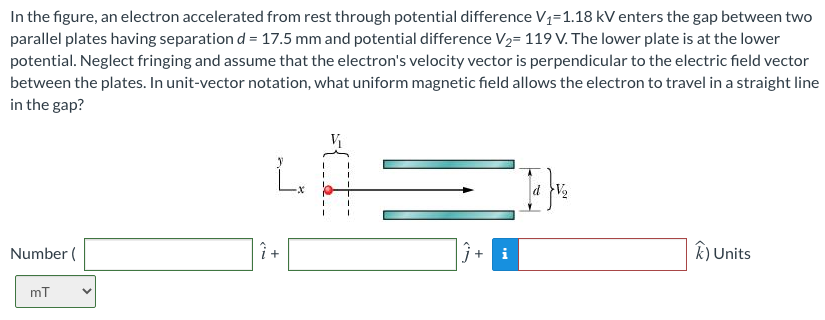In the figure, an electron accelerated from rest through potential difference V1 = 1.18 kV enters the gap between two parallel plates having separation d = 17.5 mm and potential difference V2 = 119 V. The lower plate is at the lower potential. Neglect fringing and assume that the electron's velocity vector is perpendicular to the electric field vector between the plates. In unit-vector notation, what uniform magnetic field allows the electron to travel in a straight line in the gap?
